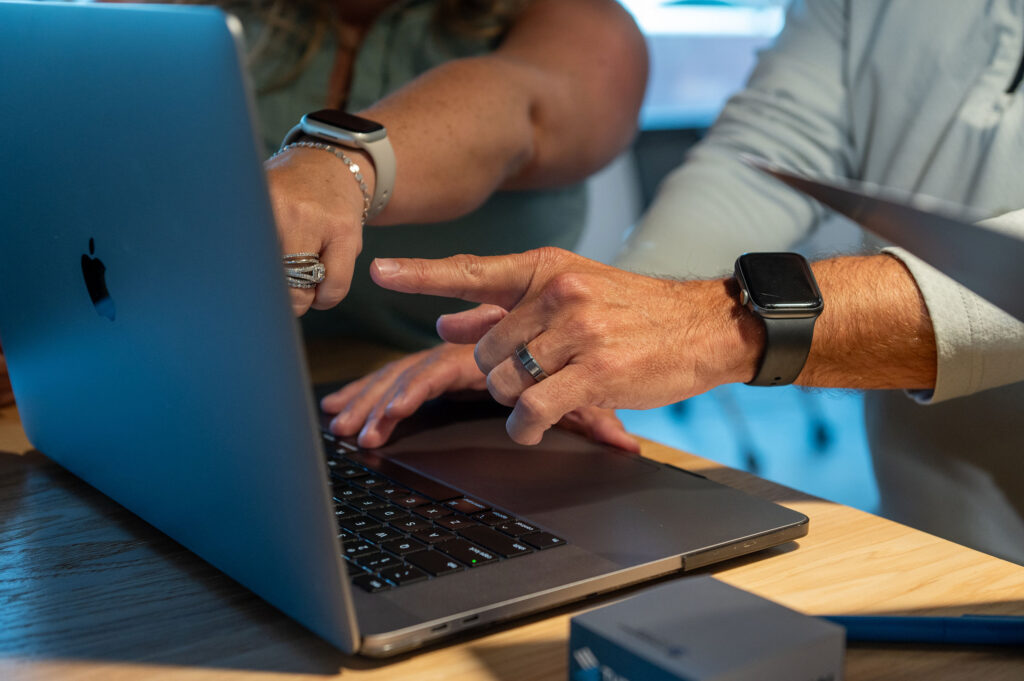The digital dialect: technological communication trends and workplace inclusivity

Diversity in the workplace encapsulates more than just demographic identity. Our lived experiences with technology influence a bevy of behaviors that manifest in the workplace. Think back to your time as a teenager. When calling your friend on the phone, did you ask to speak to your friend, leave a message (or not), immediately jump into a conversation, or did you avoid calls entirely in favor of text messages?
When phones were affixed to a wall, the nearest person answered it and anticipated the person on the other line asking if a member of the household was available. Recall, or imagine, the behaviors associated with a household sharing a single phone that had no volume control, custom ring tone, voicemail, or “do not disturb” mode. These attributes contributed to a moment of consideration before calling a friend. Was it too early or late to call? Am I disturbing their dinner time? What if my friend’s annoying little brother picks up the phone?
Caller ID introduced subtle behavioral shifts. An innovation largely attributed to Dr. Shirley Ann Jackson, the first woman to graduate from MIT with a Ph.D. in theoretical particle physics, caller ID influenced our cognitive and physical behaviors. The Pavlovian response of picking up a ringing phone was replaced with glancing at a screen to find familiarity in the display – or ignoring the call entirely. Coupled with voicemail, phone calls became more utilitarian, and our behaviors reflected that perspective, as instead of rushing to pick up a ringing phone, we would let the call go to voicemail.
Eventually, text messaging supplanted voice calls to become the preferred mode of communication. One calculation from 2023 estimates the global number of phone calls per day at 13.5 billion compared to 23 billion text messages per day. Messaging app features that allow for discretion, privacy, and etherealness have pushed corded phone behaviors into extinction. Behaviors evolved again while new norms and subcultures formed around messaging. GIFs, shorthand, and emojis imbue messaging with a cultural richness not found in any prior incarnation of communication.
The beauty of these technological differences is that they underscore the value of diversity in a relatable way, paving a new path for diversity, equity, and inclusion (DE&I) training. At Turnberry Solutions, we weave these insights into our DE&I initiatives to cultivate an inclusive environment that celebrates diverse perspectives and experiences. By exploring how technology shapes our behaviors, we embrace each individual’s unique journey, enriching our workplace culture. This approach doesn’t just enhance our internal dynamics; it also allows us to craft more inventive and collaborative solutions for our clients. Organizational programming for DE&I can include lighter topics like sharing and embracing the behaviors of our technological lived experience. The new behaviors driven by technology will continue to affect recruiting, organizational culture, vendor relations, and more. I may be too old to even be allowed to sign up for TikTok, but a shared understanding of communication behaviors will contribute to greater efficiencies and hopefully… more emojis.
Continue reading

Q2 2025 Compliance & Remediation Update
Introduction Welcome to our Turnberry Compliance and Remediation update for Q2 2025. Each quarter, our C&R…

Navigating Salesforce Marketing Automation: which tool is right for you?
With the introduction of Salesforce Marketing Cloud Next, the landscape of Salesforce’s marketing automation suite has…

A key driver of early career success: social capital
In a recent training, a colleague shared a stat that stopped me in my tracks: when…